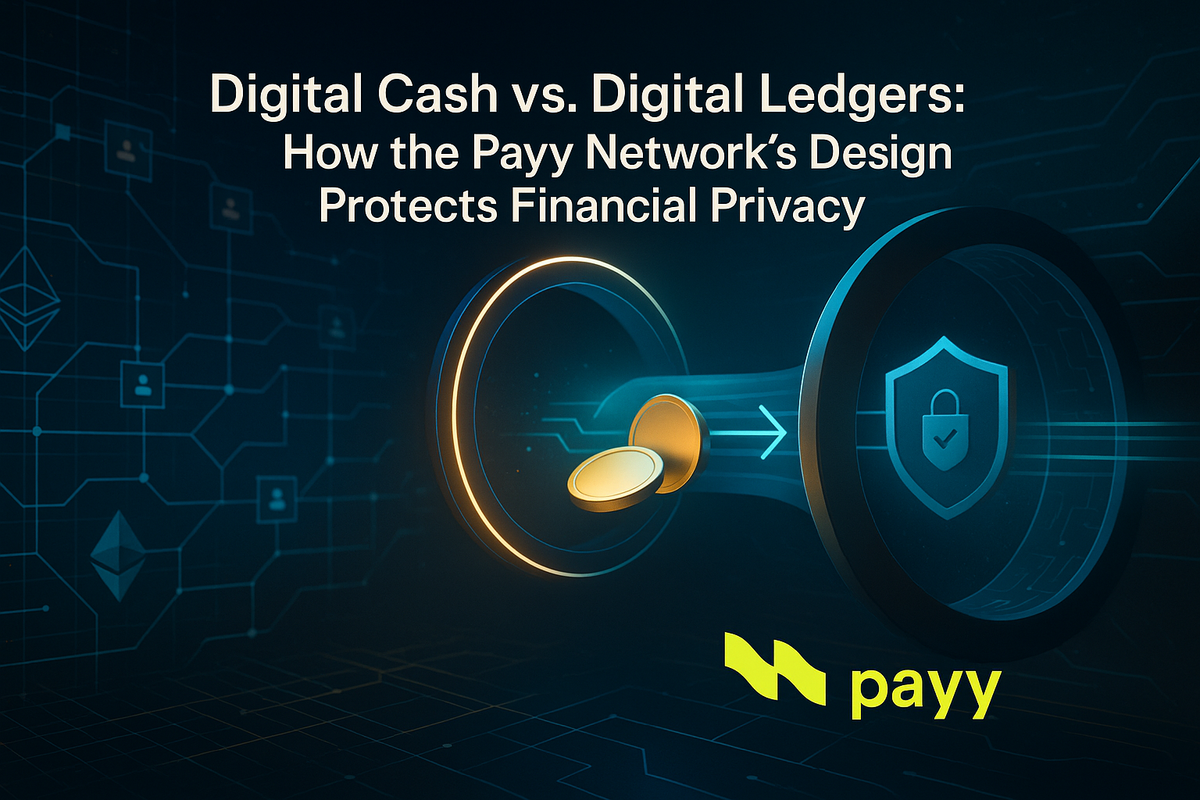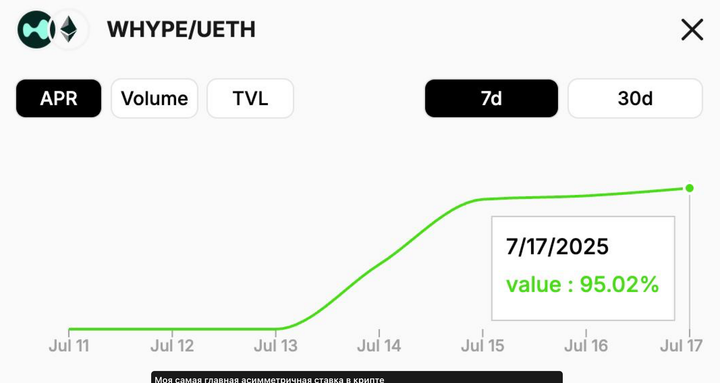Digital Cash vs. Digital Ledgers: How the Payy Network's Design Protects Financial Privacy

Executive Summary
Blockchain’s transparency, while a virtue for public accountability, creates significant privacy concerns for financial use cases. The Payy Network, an Ethereum Layer 2 validium rollup, combines zero-knowledge proofs (ZKPs) with a UTXO-based model to provide digital cash-like privacy while maintaining compliance and scalability. This architecture delivers unlinkable transactions, built-in compliance controls, and high throughput—offering a future-ready solution for private, programmable finance.
Introduction
Blockchain technology has ushered in a new era of decentralized security and trust without intermediaries. However, its inherent transparency, where every transaction is publicly visible, poses a significant barrier to adoption in sectors like traditional finance and payments, where confidentiality is critical. For many, private blockchain transactions seem contradictory. The Payy Network, an Ethereum Layer 2 (L2) validium rollup, demonstrates that privacy and blockchain are not mutually exclusive by combining the Unspent Transaction Output (UTXO) model with zero-knowledge (ZK) proofs to deliver private, compliant, and scalable transactions.
The Problem with Account-Based Ledgers
Most people are familiar with blockchains like Ethereum, which use an account-based model. This model resembles a traditional bank statement: every transaction is a line item tied to a specific account address. While straightforward, this creates a permanent, public history for every account. Transparency allows regulators to screen transactions, but also enables adversaries to analyze patterns and link public addresses to real-world identities.
Although Ethereum supports privacy-enhancing tools like mixers or ZK-based add-ons, these are non-native and bolt-on solutions. In contrast, Payy’s architecture embeds privacy at the protocol level, delivering digital cash-style functionality by design.
Why Validium? Choosing a Privacy-First Layer 2
Rollups are Ethereum’s scaling backbone, but not all are created equal. Optimistic rollups rely on challenge windows, while zkRollups store all data on-chain—making both models less optimal for high-privacy applications. Payy’s validium design stores data off-chain, ensuring scalability and stronger privacy, while ZKPs ensure the validity of transactions.
This hybrid model enables:
- Data minimization (no transaction details on-chain)
- Fast finality (~1s via PoS HotStuff)
- Efficient bridging via Ethereum smart contracts
The UTXO Model: Digital Cash for Privacy
The Payy Network sidesteps the account-based model in favor of the UTXO model, first introduced by Bitcoin and foundational to privacy-focused protocols like Zcash. In the UTXO model, value is held in discrete “notes,” akin to digital banknotes. Each note can only be spent once, and each transaction generates new output notes. For example:
- A $5 note sent to the recipient.
- A $15 change note returned to the sender.
Because each transaction results in new, cryptographically hashed outputs, the system avoids persistent linkage between transactions, accounts, and histories. Payy further enhances privacy by encoding these outputs in a sparse Merkle tree and proving spend authorization using zero-knowledge proofs.
Threat Models and Privacy Guarantees
Payy defends against several common privacy threats:
- Linkability: No shared persistent addresses
- Timing analysis: Batched sequencing obfuscates timing correlations
- Transaction graph analysis: New output notes prevent flow tracking
- Cross-chain de-anonymization: On-chain footprint is minimized
This model provides users with digital cash-like privacy and mitigates passive and active chain analysis techniques.
Privacy by Design: The Nullifier Mechanism
To prevent double-spending without revealing note history, Payy uses a nullifier. When a note is spent, a nullifier is inserted into the tree. Each nullifier is:
- Computed as
N = Poseidon(nk, ψ, cm) - Unique, using entropy (ψ) from Blake2b and a user’s secret key (nk)
- Detached from the original transaction
This design ensures that even when a note is spent, no one can link it back to a prior transaction, enhancing unlinkability and resistance to statistical analysis.
To prevent double-spending without exposing user history, Payy uses a nullifier—a special one-time code that marks a note as spent. Each nullifier is uniquely generated from a user’s secret key, some random data, and the note itself. Because it's disconnected from the original transaction, it hides where the funds came from, making it impossible to trace transactions back to previous activity.
Real-World Use Cases: Private Finance with Compliance
Here’s how Payy can be applied:
- Fintech platforms: Enable GDPR-compliant payment rails without user surveillance.
- Remittance services: Process high-volume, cross-border transactions with privacy.
- DAOs and Payroll: Pay contributors without exposing compensation details.
These examples demonstrate the protocol’s adaptability across various industries where confidentiality is crucial.
Balancing Privacy and Compliance
Privacy without compliance is a non-starter in regulated markets. Payy addresses this with:
- Transaction Lineage: Track the origin of funds without revealing transaction details.
- Privacy Pools: Group users by compliance risk profiles—e.g., KYC-verified pools or AI-scored risk groups.
- Compliance ZK Proofs: Users can prove their funds are not from illicit sources without revealing any identities or amounts.
These compliance mechanisms can be applied flexibly—on-ramp, off-ramp, or per transaction—and offer provable regulatory assurances.
Under the Hood: Provers, Sequencers, and Clients
Payy’s architecture involves distinct actors:
- Sequencers: Order transactions using HotStuff PoS consensus.
- Provers: Submit ZK proofs of validity to Ethereum.
- Clients: Generate UTXO proofs locally, keeping data private.
This model ensures decentralization, censorship resistance, and scalable throughput, with provers incentivized and slashed based on behavior.
Scalable Privacy: Performance via Multi-Level Aggregations
Payy achieves up to 10,000 TPS by layering ZK proofs:
- Client: UTXO proofs (~3s on desktop)
- Server: Insert + Aggregation (~40s for final proof)
- Ethereum: Verifies final proof only
Each layer aggregates the layer below it, reducing Ethereum burden while maintaining full verifiability.
Transmitting Notes: Online or Offline
Two options for transmitting encrypted note data:
- Peer-to-Peer: Sender shares data directly (max privacy)
- Encrypted Registry: Optional store for offline recipients (less private)
Future iterations may introduce decentralized, sharded registries to enhance resilience.
Future Outlook: Extensibility and Interoperability
Payy’s roadmap could include:
- Support for smart contracts
- Dynamic privacy pools with programmable compliance rules
- Cross-rollup interoperability using bridges or proofs
These developments would enable broader Web3 integration while preserving privacy and regulatory alignment.
Conclusion
The Payy Network redefines blockchain privacy by combining the UTXO model’s digital cash approach with zero-knowledge proofs and a scalable validium design. Through unlinkable notes, nullifiers, and multi-layered ZKPs, it ensures privacy by default. Compliance mechanisms like transaction lineage, privacy pools, and ZK compliance proofs balance regulatory needs. As a high-throughput Ethereum L2, Payy provides the infrastructure for programmable, private, and compliant digital finance.
In a world where surveillance threatens financial sovereignty, Payy proves that privacy need not come at the cost of regulation or scalability. It’s not just digital cash—it’s programmable, private financial infrastructure for the next generation of the internet.
References
- What is validium?-ethereum.org
- What Is a Zero-Knowledge Proof?-Chain.link
- Payy White Paper



Comments ()